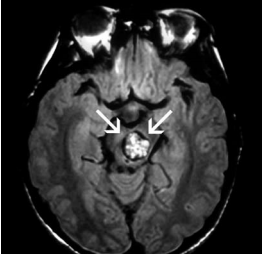
2017-07-07

Brain hemangioma can cause numbness of hands and feet
A cerebral hemangioma may show signs of numbness, headache, and physical weakness. How is it generally diagnosed and treated?
Text and picture: Registered Chiropractor Dr. Matty Wong
Case Sharing
42-year-old Ms. Li, a housewife, suddenly felt numbness in her right hand and foot in March, as well as headache and physical weakness. After a detailed examination and cervical MRI, she was initially diagnosed as the fifth and sixth cervical disc herniation and started Cox® decompression manipulation.
At follow-up consultation two days later, the patient felt that not only did the hand numbness not decrease, but also numbness in the upper body, left hand, and corner of the mouth. She also had headaches, dizziness, weak hands and feet, and weakened eyesight and she also felt very tired. This symptom does not seem to be just a cervical disc problem, and the patient has been consulted with a doctor which prescribed her anti-motion sickness, sedatives, and some vitamin pills, but it was not very helpful to her condition.
After discussing with the patient, she was referred to neurosurgeron for further brain examination and stroke assessment. The results of the examination showed that the patient suffered from Bleeding Brainstem Cavernoma. The patient’s symptoms have been greatly improved after taking the medicine, but whether or not to undergo surgery to remove the hemangioma still depends on the development of the disease.
Cavernous hemangioma of the brain
Cavernomas of the brain (see Figure 1) is a type of cerebrovascular malformations. They are shaped like a “raspberry fruit" (see Figure 2). They grow on tiny blood vessels, there are many hemangiomas. It is benign and is a more common type of congenital brain hemangioma, which mostly occurs in the cerebellum, and occasionally in the brain stem or spinal cord.

圖一

圖二
Symptoms
This type of hemangioma often does not show any symptoms. Unless the hematoma rupture, it may cause severe headaches, dizziness, numbness of hands and feet, diplopia, lack of energy and other symptoms of neurological deficits.
Treatment
Usually brain MRI or brain CT tomography.
Treatment
Generally, cavernous hemangioma is a benign lesion, which can be treated with drugs, or minimally invasive surgery can be used to remove the hemangioma follow thru a cyberknife procedure according to the patient’s condition.
(#) This is an individual case, and the actual results vary from person to person.

 Book an Appointment
Book an Appointment


